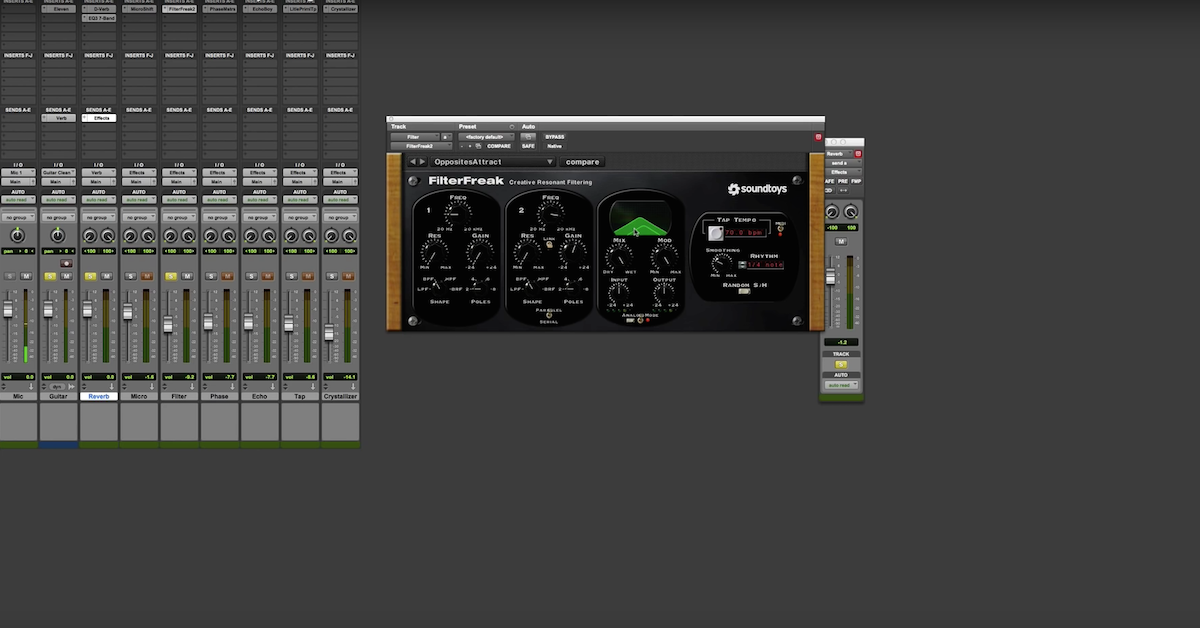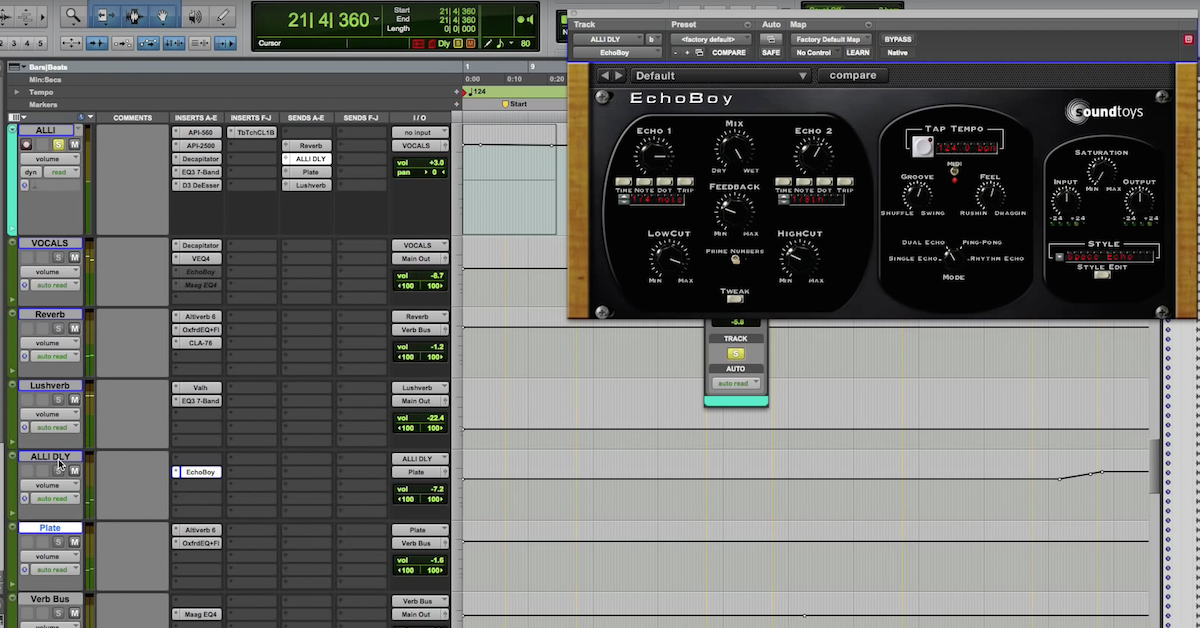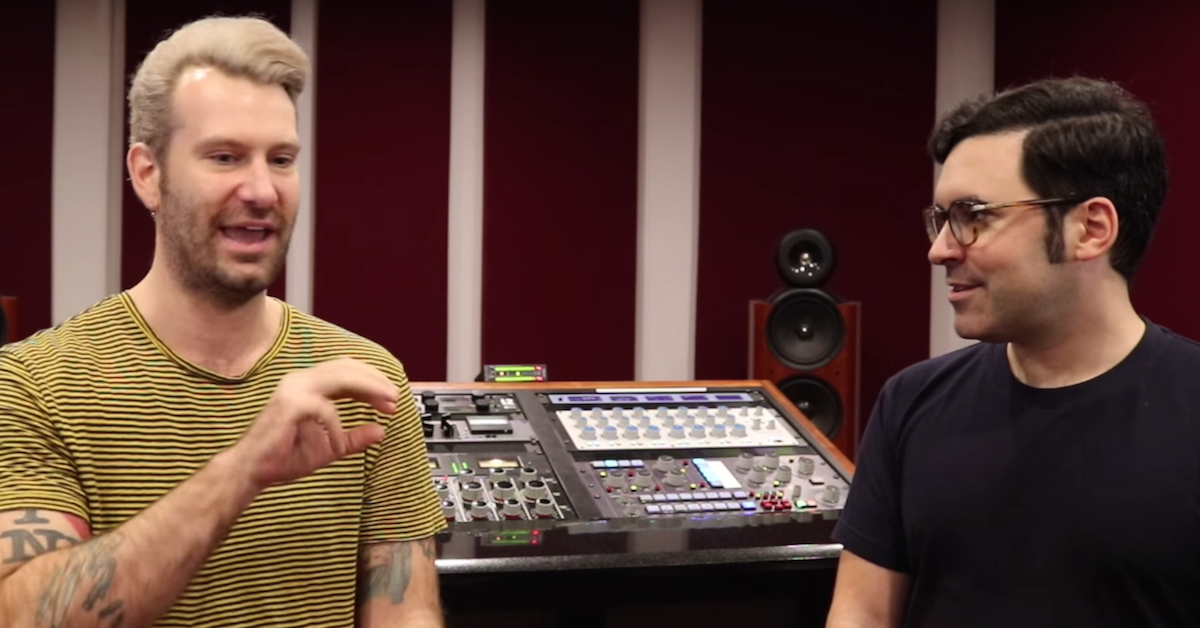Soundtoys Little Plate on Vocals and Synths in a Mix
SoundToys has released a new plugin. It’s called “Little Plate,” and it’s an emulation of the classic EMT 140 plate reverb unit. As is tradition at SoundToys, they love creating tools that can help you push sonic boundaries, and we see this reflected in several of the plugin’s features, and I’ll be covering them.
The track I’m using is called “Miss Polyester” by the band, Pushing Static. I’m still mixing it, so it’s not yet released, but keep an eye out for it.
So let’s dig a little bit deeper, take a look at this Pro Tools session, and I will show you how I’m using Little Plate in the mix.
So let’s have a listen to this track. It’s heavily influenced by the 1980’s with a lot of synthesizers. What we’re going to hear is a lead vocal that’s already been processed with a delay via EchoBoy and some saturation via Decapitator, and I like where it’s sitting in the mix. And then we’re going to hear these backup vocals that sound really close to the listener. I like the tone of the backup vocals, but they’re just not sitting in the right space, so my hope is that I can use Little Plate to accomplish some unique things.
So let’s listen without Little Plate on the backup vocals.
[mix]
So to reiterate, I’m happy with the tone of the vocals, I’m just not happy with the space in which they sit. So let’s use Little Plate to fix that.
As we see, I’ve got these four backup vocal tracks being hard sent to this aux. We have some processing on this aux, and then this is sent to a Little Plate auxiliary track.
The first thing I noticed about the user interface is that we have a big fat knob sitting in the middle of it. I think this is great design, and I will talk about why. You’ll see why eventually. Let’s have a listen to the vocals out of context with Little Plate.
[vocals with Little Plate]
So we hear a really rich, warm tone. Just stock, immediately inserted, it sounds good, and that’s always a good sign. Some of the features — we have a dry/wet mix, which is always great. In this case, I’m going to keep it all the way wet. We have a low cut. I’m going to use a little bit of this. It goes between 20Hz to 1kHz. Let’s go to about here.
We also have this Mod modulation switch. Adds a very subtle chorus-y effect to the reverb, and then this big old knob here we can go between half a second to literally infinity.
So it’s a lot of fun. What I’m going to do before I start messing around is make it so I can automate all of these features. Okay? And we’re going to go into Write mode, and I’m sort of just going to play with Little Plate like a little performance.
[mix]
So I’ve switched back over to Read mode, and let’s solo these backup vocals and Little Plate to hear what I did, and you will also be able to see the performance on the user interface.
[backup vocals with Little Plate]
What a beautiful tail. This adds an extra layer of performance to what was already a pretty cool sounding track. Sometimes, when you have a lead singer and backup vocals that are literally the same person, you’re going to have trouble making them sound like they’re in the correct space, because it’s all the same person.
Little tips like this can really help. We’ve got a lead singer that’s being processed one way, and we have backup vocals that sound nothing at all alike. So what I’ve done is just take advantage of the really nice, warm sounding decay of Little Plate.
If you listen to the backup vocals, they do have some harshness and a lot of sibilance going on. The fact that it’s already a warm sounding plugin the second you load it really helps not make those esses sound too harsh, and so what I’ve done to fill in the space between when the backup vocals go away and when they come back, I’m using a long decay time. I think it’s just a cool little production technique. I might do something like volume automate down Little Plate, just because I don’t want all of that space taken up, but it just adds some ear candy.
I have probably half a dozen great plate emulation plugins, but this is the first one that I’ve seen that has this giant knob sitting in the middle. Had I not seen this, I might not have gotten the inspiration to experiment with the decay time, and this technique would not have come about, so great job on the design, SoundToys, as usual.
Next, I’m going to use Little Plate on a synthesizer track, not only to alter the space in which the synthesizer sits, but also the tone of it.
Let’s solo out this synth and take a listen.
[synth]
So my issue here is that it just pokes out a little bit. There’s a lot of high frequency content, and I’m going to put Little Plate directly as an insert on this audio track, and I’ve already dialed in my setting, just to show you I’ve got a little bit of a low cut, and I’m using the dry/wet blend. I do want some of the original brightness to shine through, but this will just dull it out ever so slightly, and I’m going to turn on the Mod and a good decay time of 3.5 to 4 seconds should suffice.
Let’s have a listen now. Let’s solo it first.
[synth with Little Plate]
And that decay time is just perfect so it fades out right before the next part of the song comes in.
So I gotta say, really impressed with how simple this plugin is, but also the usability of it, and of course, the sound. So make sure to check out Little Plate by SoundToys.
This has been Ian Vargo of The Pro Audio Files and masteringinthebox.com. See you guys soon, bye!

![Soundtoys Little Plate on Vocals and Synths in a Mix [Free Plugin]](https://i.ytimg.com/vi/1sLO5RkwCSw/hqdefault.jpg)



